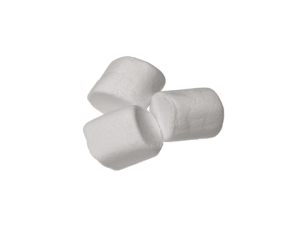The Story
I received a text, after the Value Proposition post, from a colleague who asked me to define the difference between Hard and Soft cost savings. This is the response to that request.
The Context
From the Value Proposition blog post: “Material management processes within hospitals have become much more sophisticated over the past decade. They no longer will “buy” a good story. They need to see the health-economic data to believe. Realized increases in value are considered hard savings. Those unrealizable cost savings that you include in your story are considered soft savings. Hospitals will hold you accountable for whatever value increase that you claim/promise your product or service will deliver.”
 Hard Cost Savings Defined
Hard Cost Savings Defined
The Hard Cost savings are those resource utilization reductions that are tangibly realized. Such as, your new device does the jobs of three devices.
As an example, (Price of device 1 + Price of device 2 + the Price of device 3) – The price of the new combination device = Hard cost savings.
($100.00 + $60.00 + $35.00) – $125.00 = $70.00 x 1,000 (the quantity of devices used) = $70,000 (realized cost reduction)
Soft Cost Savings Defined
 The Soft Cost savings are those theoretic savings that don’t add up to a real reduction, or are those that may or may not be realized based on a probability, or those that might be saved by a department that is not in the same service line as the therapy that your new device is intended for.
The Soft Cost savings are those theoretic savings that don’t add up to a real reduction, or are those that may or may not be realized based on a probability, or those that might be saved by a department that is not in the same service line as the therapy that your new device is intended for.
Example 1: Let’s say that using your device will reduce OR time by 10 minutes per procedure. OR time is valued at a rate of $1,000 / min. Therefore you tell the hospital that they will save $3,000 per procedure. This is a soft cost reduction. Why? The hospital has three OR suites that run concurrently. So any corresponding labor reduction won’t reduce staffing. The timesaving isn’t enough to do an extra procedure, so there is no increase in capacity. So the likelihood that the hospital will realize the benefit, in a monetary sense, is low.
Example 2: The national numbers indicate that a Serious Adverse Event (SAE) occurs for this procedure at a rate of 1/1,000 procedures. Nationally there are 100,000 procedures done. 100 SAEs per year. Your device reduces the probability of that SAE occurring to .1/1,000, so there would be 10 SAEs per year. The cost of that SAE to the hospital is $100,000. So, Nationally the cost of those SAEs is $10 Million dollars.
The hospital you are selling to does 500 procedures per year. The probability that they will experience an SAE is .05%, not very likely. The national story is solid but the local reality is that this is a Soft Cost reduction.
Hard vs. Soft
Focus on the hard costs as a promise. The soft costs are bonus points, emphasis them in hospitals where they are more likely to matter. From example 2 above, if they are a hospital that does 10,000 procedures per year, or if they recently experienced the SAE they might be more inclined to see the benefit in the soft cost.
Remember
This post only deals with the monetization of the value proposition. If your product doesn’t add utility the cost of it doesn’t really matter.
You sell locally, not nationally. Make sure that when you localize your story it still plays. As an aside, your value proposition may not play across borders. Don’t assume, do your research.
“Experience is what you get, right after you need it most.”
Make it a great day,
Tim Walker
Tim Walker is the Principal consultant for The Experia Group. A small consulting firm that specializes in providing experience and expertise during critical device commercialization phases to increase the probability of success. www.theexperiagroup.com.
© 2015 The Experia Group, LLC
www.medicaldevicemrktgblog.com